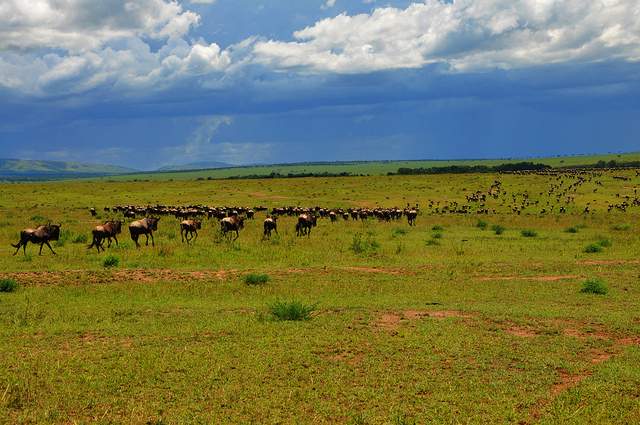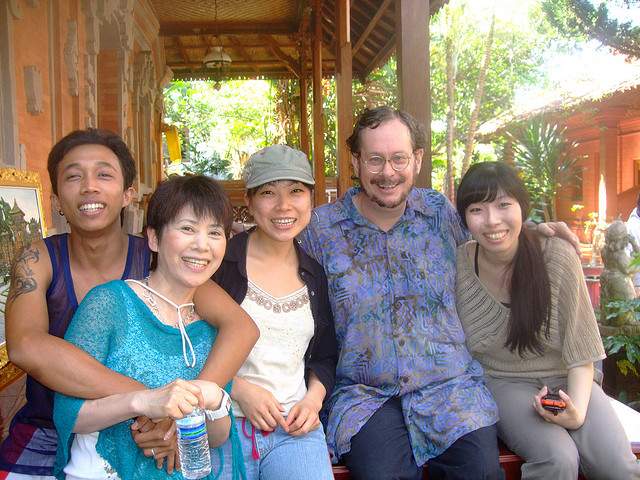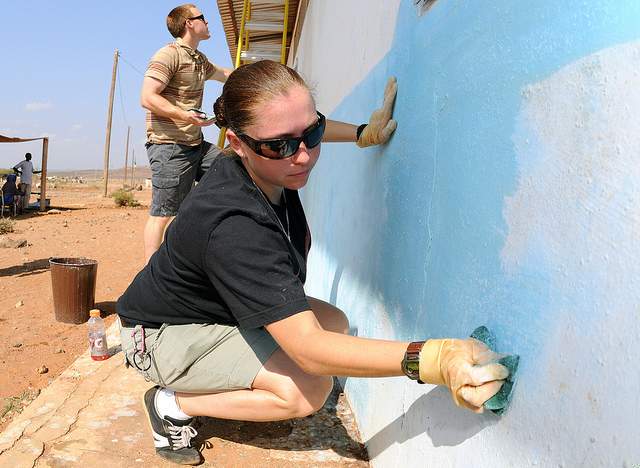Our “Sustainable Travel“ series is sponsored by Global Basecamps. Global Basecamps is specialty travel company that helps independent travelers research and book locally owned boutique hotels, off-the-beaten path lodges and multi-day excursions all over the world. Whether hiking the Inca Trail, experiencing a traditional Japanese Ryokan, or relaxing on the beaches of Thailand, Global Basecamps specializes in designing completely customized itineraries to meet each travelers specific priorities and match their travel style.
Eco-tourism has been the buzzword of the travel industry for a while now and there are a host of eco-friendly ways to explore the world on even the most minimal travel budget. But where should you start? To find some of the most unique and authentic sustainable travel experiences that won’t break the bank, we turned to some fellow travelers for ideas and advice. Here are some of their favorite ecotourism experiences that won’t burn a whole in your pocket.
Get back to nature
We couldn’t discuss eco-tourism without giving a nod to the world’s wildlife and it was no surprise that so many standout trips involved getting back to nature. But viewing wildlife up close or having a beach all to yourself doesn’t mean you need to shell out big bucks. You may just need to pay with a bit more time and effort.
“My most recent memorable eco-friendly experience was in Tyrone, Colombia. Tayrona is considered a national natural park.” Michael Tieso from Art of Backpacking told me. “It’s on the Northern East coast of Colombia and holds some of the most beautiful beaches in Colombia. Cars cannot pass through so most of the beaches require a long walk through the park to get there. It took me 4 hours from the entrance of the park to the beach. Once I got there, the only accommodation was to either sleep in hammocks or tents near the beach. We camped out and enjoyed the ocean breeze while being surrounded by a jungle behind us. It was a relaxing and memorable experience.”
Nadine Lewin took a week long expedition with a Horse Trekking company in New Zealand and found fuel-free travel to be far more rewarding than a tour bus: “New Zealand has some of the most incredible scenery and riding through it on horseback every day allowed me to feel even closer to nature. We rode all day, camped out and cooked all our own food, which was hard work but a lot of fun! We had to put a lot of thought into the way we traveled as New Zealand has stringent guidelines on protecting the environment, but it was definitely worth the extra effort to feel like we were truly experiencing sustainable tourism.”
Peta Brooks was another traveler who decided against traditional transport: “I spent 6 days on a local boat sailing down the Amazon from Peru to North Brazil, sleeping in a hammock and living off food bought from the villages we stopped in. It was an exhilarating way to experience the Amazon and even though I later trekked through the rainforest and camped out under the stars, nothing beat that first week of watching the world go by from the deck.”
How do you do it?
National parks and wildlife sanctuaries can be found all over the world, and contain some of the world’s most vibrant plant and animal life, often preserved under government protection schemes. Just be careful to maintain eco-friendly practices when hiking, cycling or horse-riding – stick to the trails and take your rubbish with you.
For those deciding to travel with a guide or tour group, Melissa Andrews from Eco Friendly Africa offers some good advice: “The company or guide must be local or support the local economy in a measurable way that I can see with my own two eyes. I think it’s important to give back – either through volunteering your time or in some way benefiting the local community. Of course, this extends to the environment as well; we should literally leave no trace. A tour company that serves imported food for instance, would not meet my criteria.”
>> Read about eco-friendly destinations around the world
Cultural immersion
Eco-friendly travel doesn’t just have to be about wildlife safaris and luxury eco-lodges – getting in touch with local communities can be just as exciting and embracing the local lifestyle means that your time and money will be directly influencing the local economy and contributing to sustainable tourism efforts.
Manager of South American Hostel chain La Rocca, Martin Miguel agrees that going local is the best way: “I traveled throughout North Brazil last year and thanks to couchsurfing, I never paid a penny for accommodation! It was about more than the money though – I ended up living with local families, experiencing their way of life and learning how to cook local food. I didn’t see another tourist the whole time I was traveling and I’m still speaking to the friends I made.”
Living like a local not only gives you an insight into the local lifestyle, but it can be valuable lesson in learning to live without modern amenities, as Ruta Marcinkus found out on her trip to Laos last year: “A standout moment from my South East Asia travels was traveling down the Nam Ou river in Laos by longboat and staying in the small villages dotted along the riverside. We slept in bamboo huts with a couple of hours of electricity a day, cold water showers and few amenities (we took our laundry to a local lady to wash, only to find our underwear hung out to dry on the street later on), but [this] only added to the experience. We stayed in a guesthouse where we lived and ate with the family, went fishing during the day and stayed up drinking Lao Lao (local whisky) with the locals by candlelight. It gave us an insight and understanding into the culture and beauty of the country that would have been impossible if we’d just gone tubing in Vang Vieng like everyone else.”
Melissa Andrews’ top destination was also a cultural experience: “Sri Lanka [was my favorite eco-friendly destination] for sure. It’s simple and rural; you can eat local food and support the local economy. My husband, a friend and I traveled to Sri Lanka – staying only in homestays or couchsurfing, and used bus, trains, motorbikes or our own two feet to get around. I always try and travel to third-world countries to support them.” She also agreed that the best way to get back to nature is to get out there and experience it for yourself: “I love nothing more than using my own two feet to get around, or even a bicycle or scooter. There is no better feeling than being out in nature surrounded by a country’s breathtaking beauty and to immerse yourself in the culture of its people. Pretty hard to do that if you’re on an air conditioned tour bus!”
Adventure traveler Ryan Uncapher took this sentiment to the extreme on his travels, avoiding public transport altogether and cycling his way around India. His method of traveling was not only an adventure but a lesson in minimalist travel, that he found brought him closer to the local communities he traveled through: “Riding my bicycle across India with only a tent, sleeping bag, and two panniers full of clothes, I was able to witness the world in it’s most beautiful and natural form. One where locals invite you in to become part of the family, and a mutual global respect is attained. [It’s] this pure form of travel [that] brings out the purest intentions in others.”
How do you do it?
Living and traveling like a local is a surefire way to ensure your travels have minimal impact on the environment – stay in small family-run guesthouses, homestays or try couchsurfing; grab a bite from street stalls or explore village markets for fresh produce, and ditch the flights in favor of lower-emission public transport. But the best part about seeking out a cultural experience is they can happen anywhere and everywhere – just keep your eyes and your mind open.
>> Get tips for traveling responsibly in developing countries
Volunteering
One sure-fire way to ensure you’re contributing to sustainable tourism is to give a little back – whether working for their keep or volunteering as part of a tour, the travel community had plenty of volunteer experiences to share.
Lars Hendel had a great experience living and working on an organic farm in Japan: “It started out as a way to save money and practice my Japanese but it turned into a much bigger experience than that. We worked a few hours a day, planting crops, harvesting and maintaining the property [in exchange for food and accommodation] and our hosts were incredibly knowledgeable, so I learnt a lot about organic farming practices as well as some great natural remedies. Not only that, but the house was very eco-friendly – there was a compost toilet, solar shower and all the food was fresh and homegrown. It [allowed] me to experience Japan in a completely different way.”
Melissa Andrews had a similar experience in a more unexpected location: “I volunteered in Palestine on a permaculture farm, helping to generate awareness of permaculture in the Middle East (where it is relatively unknown) – and I plan to continue doing this throughout Africa. We created soil, planted seeds and helped build a chicken coop.”
Adrienne Vita, a Global Basecamps intern, did a voluntourism project in the mountains of the Cajamara region in Peru: “It was a remarkable experience that I will never forget. While helping a family build a brick stove, I loved the time I got to spend with the mother, Beatriz, and her two children, Carmen and Ernesto. Beatriz is one of the sweetest woman I’ve met and Ernesto was a firecracker of energy. With quiet and helpful Carmen, they make a very welcoming and giving family, despite how little they have. We would drink coca tea while she described typical day-to-day life and the struggle of not having a grown man around. She’d pipe in every now and then with a joke about which voluptuous cui she would love to cook up next, it would lighten the mood a touch during serious conversation. But that’s just it, a woman who struggles so much every day finds simple pleasures out of jokes about rodents. The culture in Peru is truly one of a kind, filled with history and beauty.”
Michael Tieso from Art of Backpacking also enjoyed his experience volunteering in Argentina, but was overwhelmed by the extent of the need in his host community: “I volunteered in Misiones, Argentina, in the deep jungle assisting a small village build a better community. I had to prepare food for the children, clean up the neighborhood, and provide inspiration to the village to be more eco-friendly. I had only been there for a week and I realized that it wasn’t nearly enough time to really make a lasting impression on the village. The organization goes every month to the village but with a different group every time. In order to create a real change, I felt there needed to be a group of people who could stay for a longer period of time and connect with the community.”
Volunteering doesn’t always have to be planned beforehand. Ulrica Schmeier heard about the oil spill in Tauranga whilst traveling in New Zealand last month and hopped on a bus to help out: “At first they had so many volunteers turn up that it was hard to find work, but I stuck around a few days and soon found a place with a penguin rescue team. I’ve spent the past few weeks cleaning and re-homing some of the hundreds of blue penguins left homeless by the spill. It’s been long days and hard, often messy, work, but I feel like I’ve made a positive contribution and it’s added a whole other dimension to my travels.”
How do you do it?
WWOOF and Help Xchange provide opportunities to exchange farm work for food and accommodation, or try one of the plethora of tour companies offering volunteer packages – just be sure to check out their eco credentials before you sign up.
>> Learn how to make a difference on a short trip
Keeping it eco-friendly
Whatever you decide on, the best advice offered was to stay aware of your environmental impact wherever you end up in the world. Make the small changes like “buying less plastic water bottles” and supporting recycling schemes, as Michael Tieso suggests, and “try to [travel like] local as much as possible: eat local food, take public transportation, talk to local people [about their concerns]” as Guillaume Foutry of Ecotourism: Taking Pictures and Leaving Footprints advises.
All of these considerations add up. Melissa Andrews best sums up the eco-travel ethos: “How do you not only minimize your impact, but actually benefit everything, and everyone around you? These are all questions I ask. Ultimately, you have to be a conscious traveler. For instance, a hotel might call itself ‘green’ but what does that mean? You need to do your research. You have to ask the questions nobody else wants to ask, and even less people want to answer. Look deeper.”
Cultural immersion is a highlight of many Global Basecamps’ itineraries. For example, their Tanzania Safaris allow travelers to immerse themselves in the lives of the people of Northern Tanzania. They are welcomed into the local villages where they can exchange customs and stories with the Maasai people. Further, Global Basecamps Vietnam tours journey to remote hill tribe villages in beautiful Sapa Valley, allowing travelers to visit the ethnic markets and experience what daily life is like for the local people. Ecotourism is about more than just preserving the environment and the wildlife, interacting with the locals and embracing their traditions helps ensure the preservation of indigenous cultures and helps contribute to sustainable tourism efforts.
Get more tips for eco-friendly travel:
- 8 Tips for Trekking Responsibly
- 6 Things You Didn’t Know About Eco-Tourism
- How to Travel Responsibly on a Budget
- 10 Ways to Travel Responsibly Next Year
Photos by: Wajahat Mahmood, madaboutasia, US Army Corps



